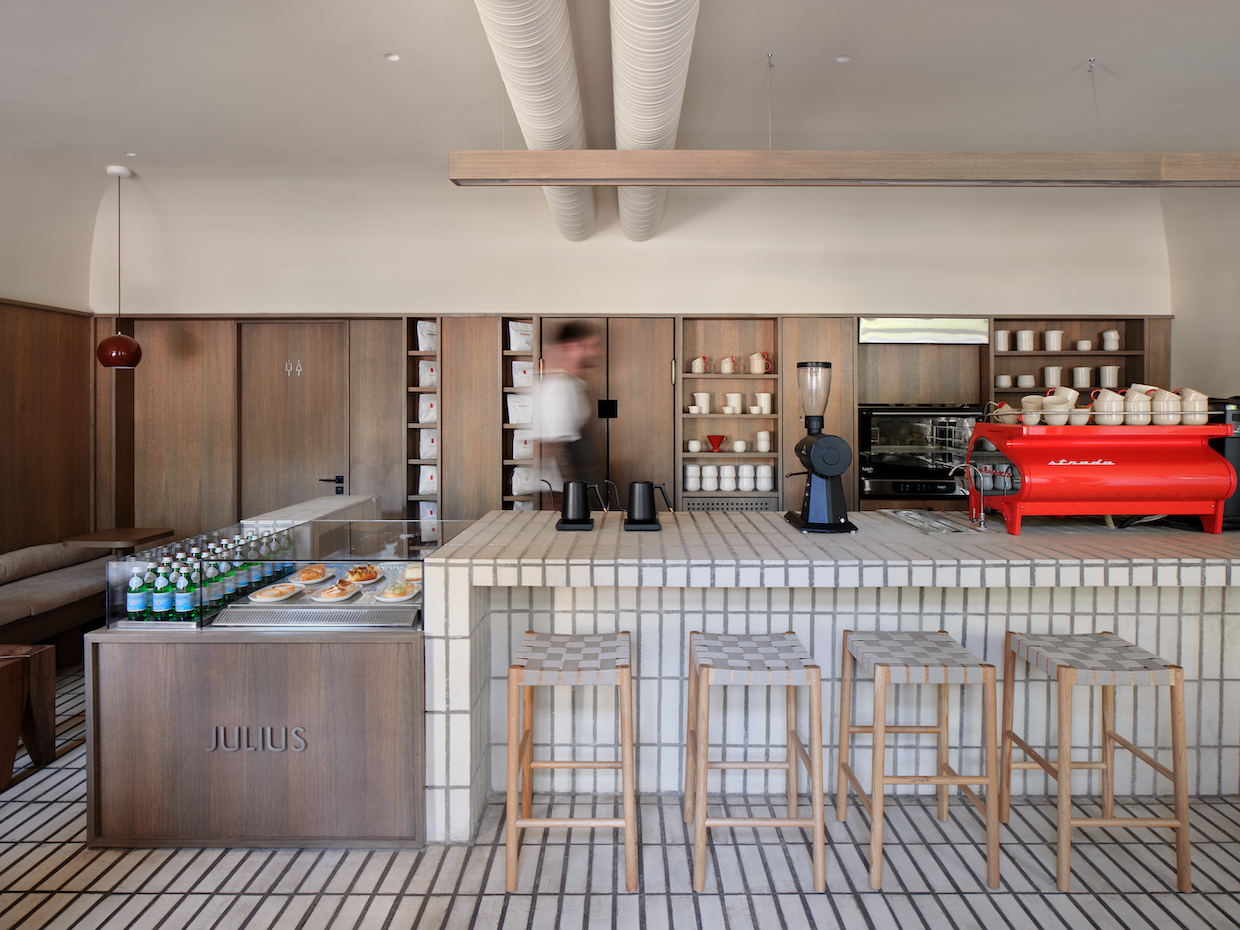
A red La Marzocco Strada machine anchors the coffee bar and the shop design at Julius in Kazakhstan. Photographs by Damir Otegen, courtesy of NAAW.
Welcome to Design Details, an ongoing editorial feature in Daily Coffee News focused on individual examples of coffee shop architecture, interior design, packaging design or branding. If you are a coffee shop owner, designer or architect and would like to submit your project for consideration, reach our editors here.
Design Details: Julius
- Project: Julius
- Architect: NAAW (Kazakhstan)
- Client: ABR Group (Kazakhstan)
- Location: Kabanbay Batyr St 83, Almaty, Kazakhstan (Google Maps)
- Size (interior): 42 square meters (452 square feet)
- Opened: 2022
- Photographs: Damir Otegen
A bright red La Marzocco Strada espresso machine provided the colorful starting point for the architectural and interior design of Julius, a small but quality-focused specialty coffee shop in Kazakhstan.
Created by the Kazakhstan-based restaurant group ABR, Julius occupies a modest 42 square meters (452 square feet) in the heart of Kazakhstan’s largest city, Almaty.
Pops of red appear throughout the shop in fixtures, logo and equipment, while the red door is a nod to the iconic Parisian bar Little Red Door, according to the Almaty-based firm that led the design, NAAW.
“The desire to turn this small space into a little ‘coffee sanctuary’ led us to the chamber-like coffee-and-milk colored wood paneling, ceiling vaults and brick floor, which starts outside from steps and transitions to a bar counter,” the firm said in a statement shared with DCN. “We used German Feldhaus clinker bricks in the project. The material is strong and hard-wearing enough for a floor covering, but at the same time cosy and pleasant to the touch to serve as a worktop.”
To accommodate the client’s desired number of guests in such a small space, the firm used deep window sills as part of the seating, as well as small-footprint but sculpture-like e-15-style stools. Tables for larger parties are worked into the window areas while additional stools overlook the active bar.
“Despite the modest size of the room, it was important for us to pay sufficient attention to the bar, where the main coffee-making action will take place,” NAAW said. “The contact bar gives visitors the opportunity to watch the process of brewing coffee as a performance.”



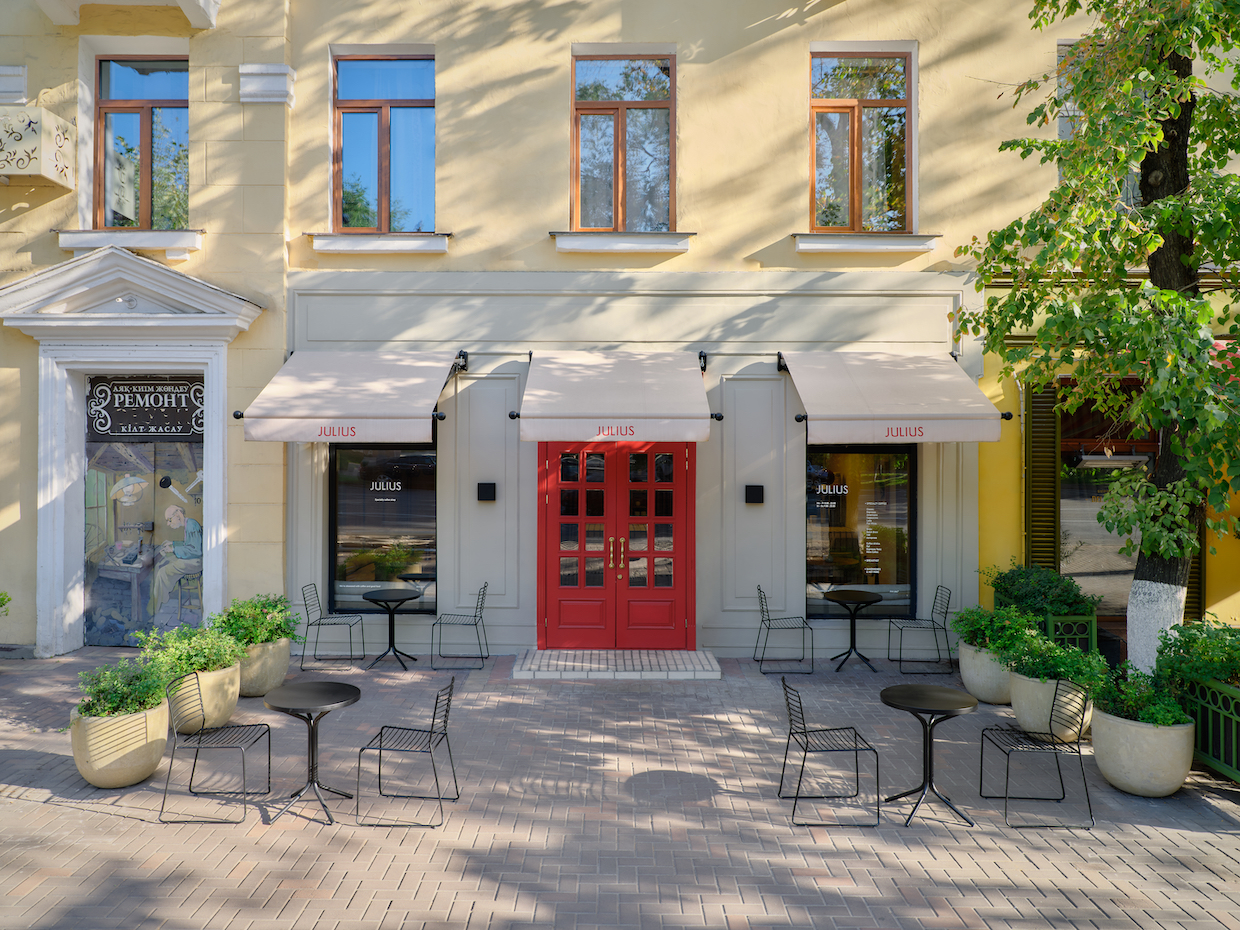
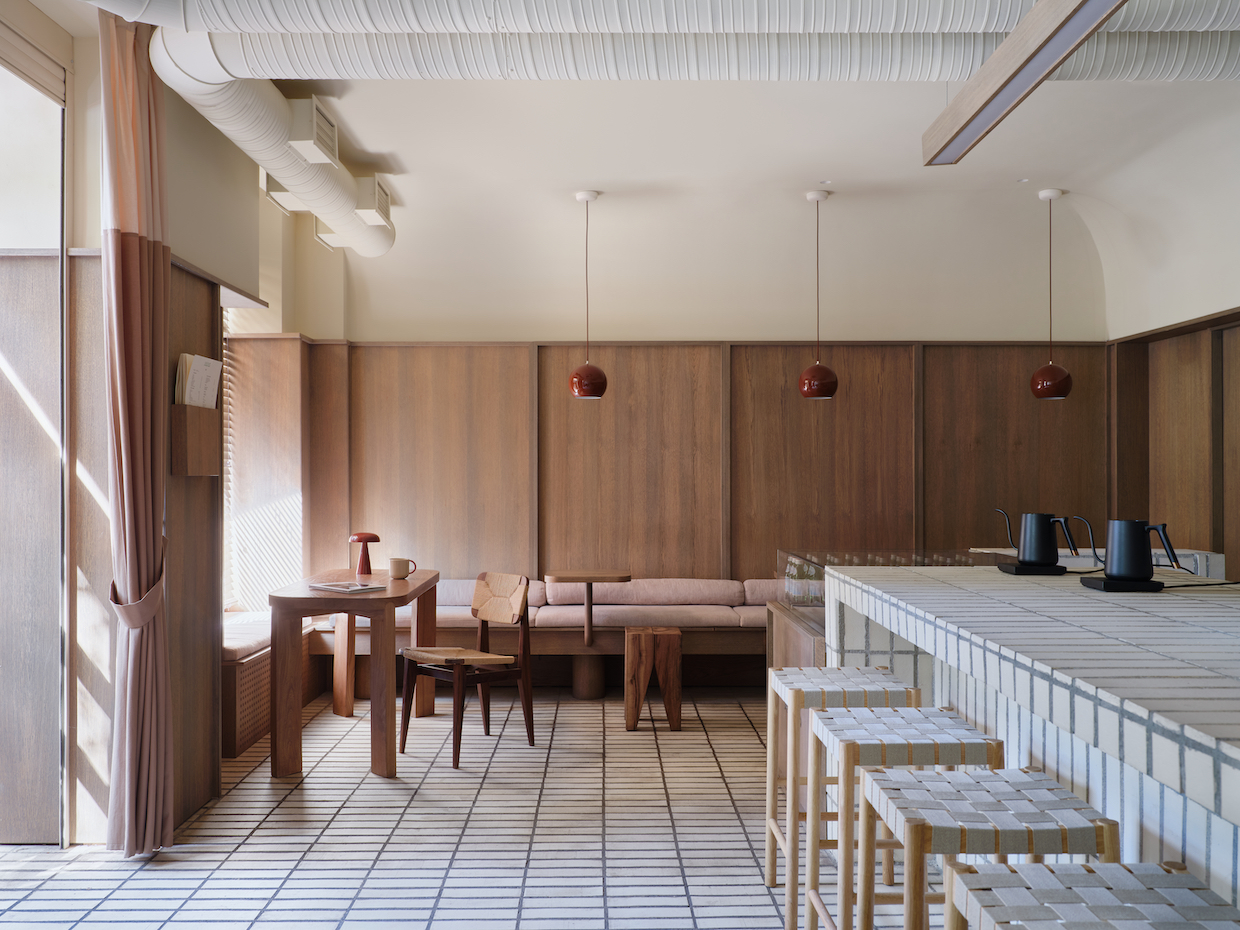
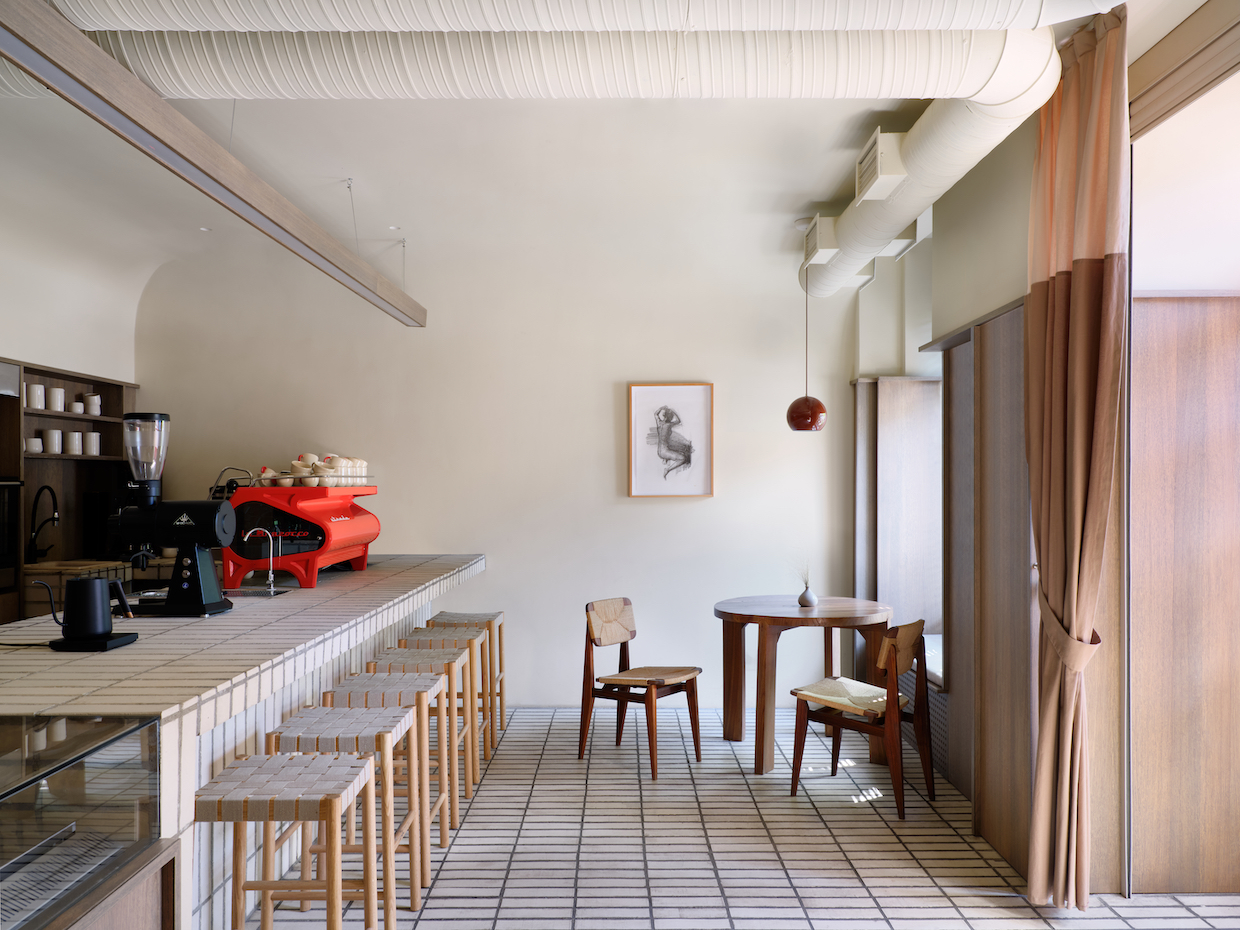

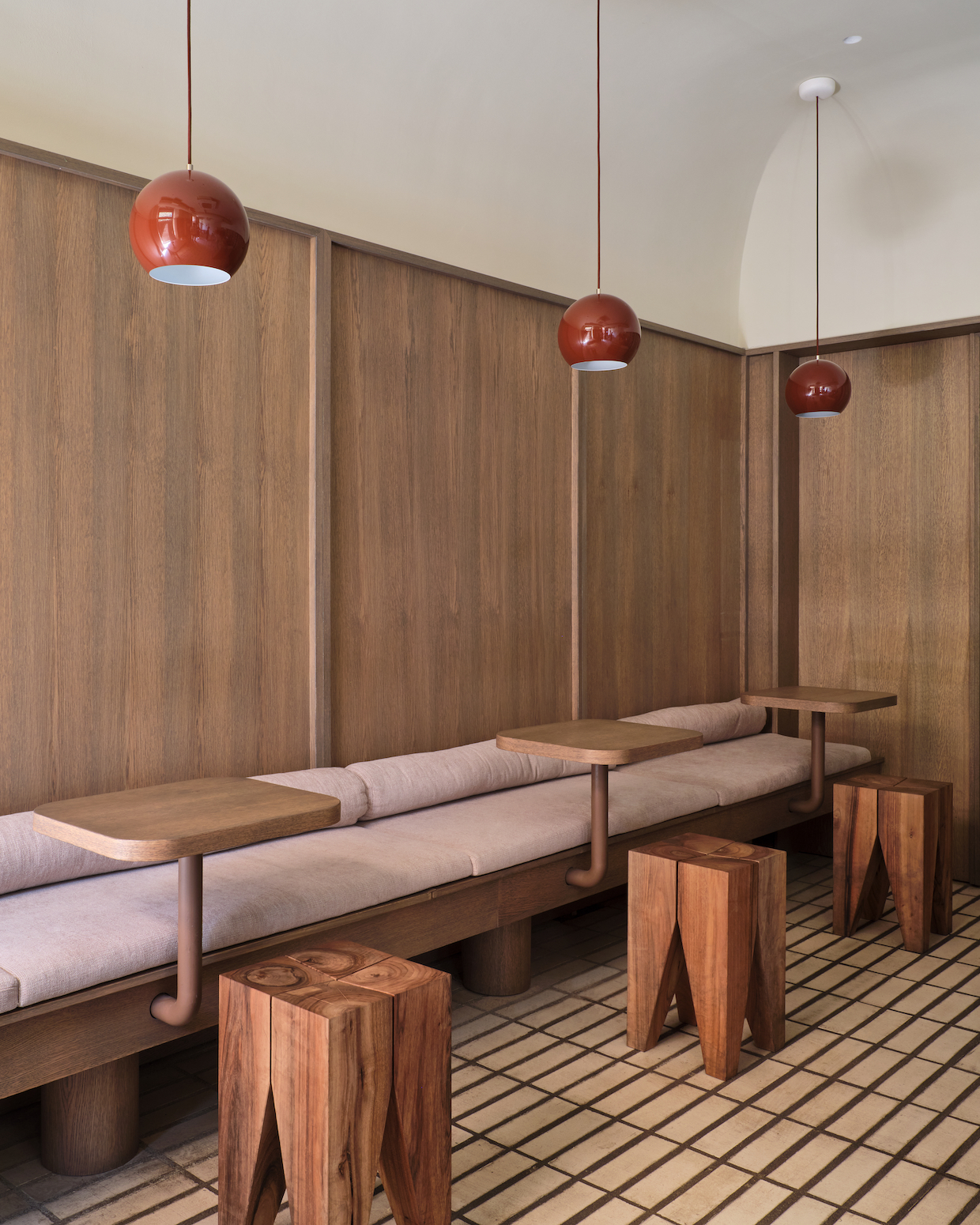
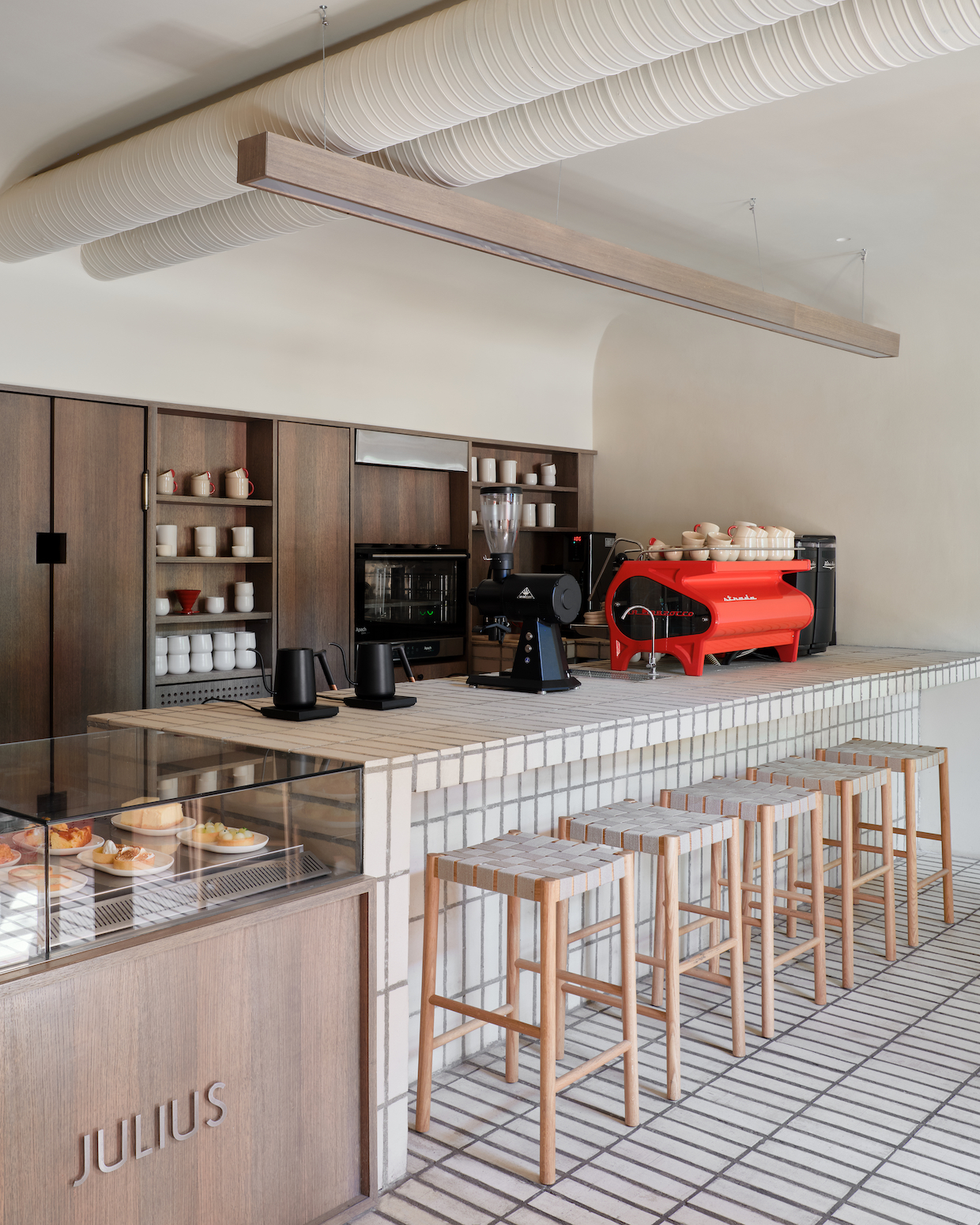
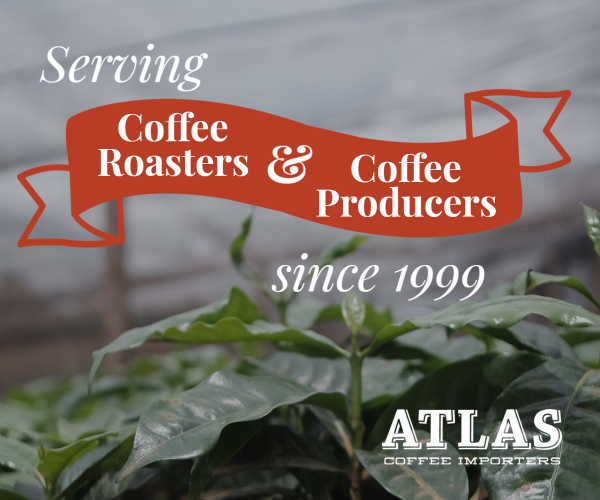

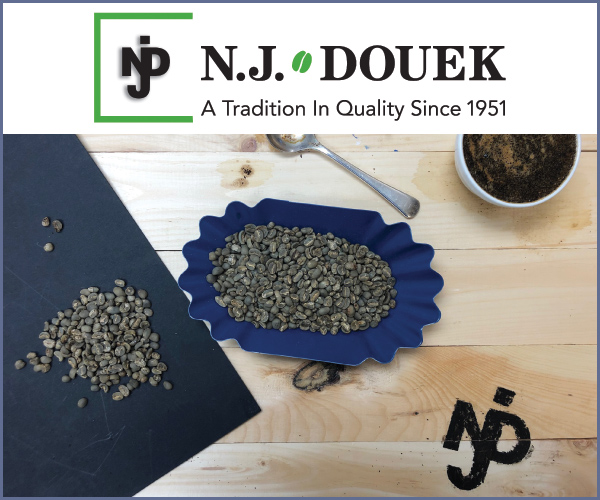




Comment